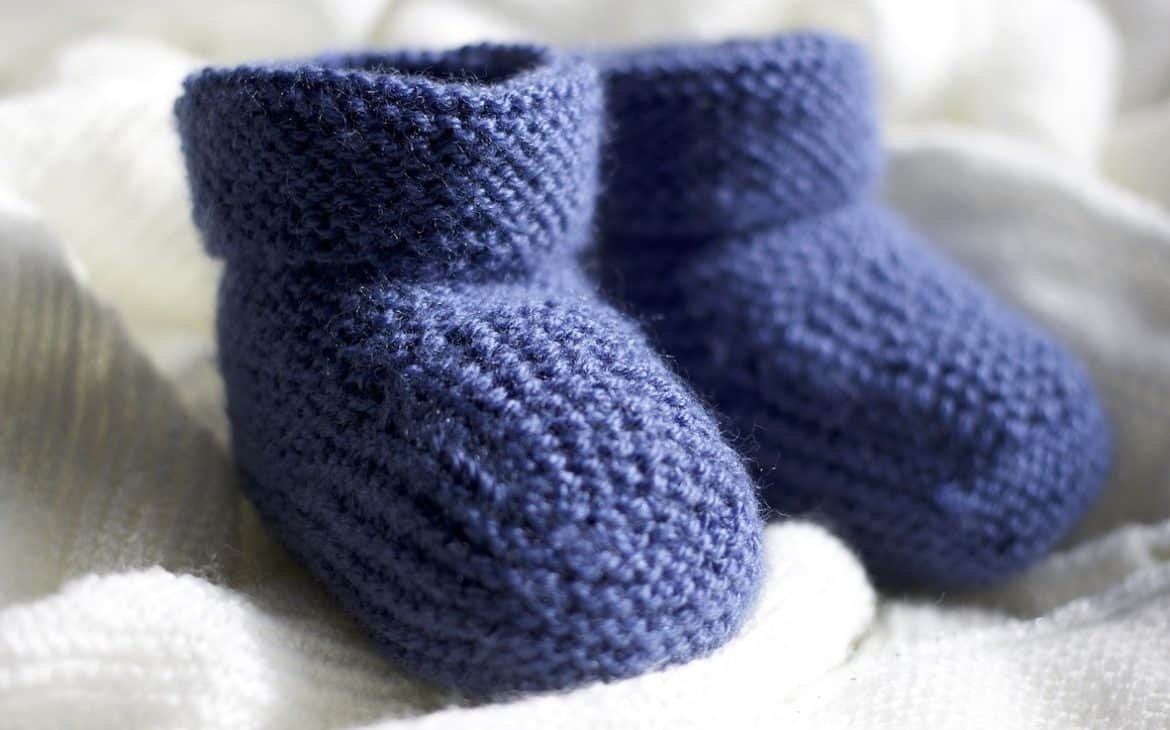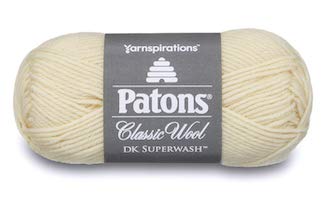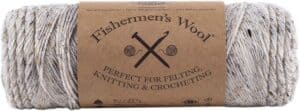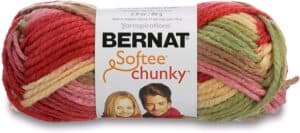The chilly winter season tends to put our regular home and work slippers out of use since we have to wear socks to keep ourselves warm. Most of us prefer hitting trendy stores seeking a comfortable and fluffy alternative.
However, to get a hold of the most comfortable pair of slippers, you don’t really have to look any further than your own home. Crocheted slippers are the best way to keep your feet warm and fuzzy while being comfortable walking around.
So what is the best yarn for crocheting slippers?
The best kind of yarn for crocheting slippers is the superwash wool as, unlike normal wool, it does not felt or shrink.
Choosing something that will keep your feet cozy and allow some breathability at the same time takes a whole lot of time and effort.
Choosing Yarn for Crochet Slippers: Factors to Consider
Finding a material that has a soft and smooth touch and provides you with a decent grip, can get tedious at times. Something too warm might make your feet sweat, which hinders comfort. Too much of breathability might ultimately result in discomfort due to the cold weather.
Something too soft and smooth might decrease the friction between the floor and you, and may ultimately make you susceptible to slipping. However, a frizzy yarn which has a lot of friction obviously comes as a menace to your comfort.
Types of Yarn For Crocheting Slippers
My goal with this article is to provide you with a comprehensive guide that will assist you in choosing the best yarn possible for crocheting slippers.
Read on to find out more about the superwash wool and other yarn types that may be suitable for slipper crocheting.
1. Superwash Wool
You can wash superwash wool in-machine, and will not come across any felting issues. Generally, wool hair is composed of scales, and when these scales are combined together, it causes felting.
Now, you must be brainstorming about how the superwash process saves your wool from felting. Well, here are two ways in which it might help you:
- Sometimes, the manufacturers of superwash wool treat it with an acid bath for eliminating its scales. And, this whole process keeps felting at bay.
- At other times, the yarn gets covered with a protective layer of polymer or resin so as to reduce the scale exposure. This too, therefore, reduces the chances of felting to zero.
There can be cases when the yarn receives either of these treatments, or a combination of both for being called the ‘superwash’ wool.
However, one must take this note into consideration while washing the superwash wool. Things made of this fabric should never be brought into contact with heat, for this might destroy the protective coating and expose the scales, ultimately causing the unwanted felting.
Therefore, it is recommended to give them a cold wash if washing is needed. Also, make sure to flat dry it and not heat dry due to the aforementioned reason. These are a few handy tips to preserve your fabric or favorite slippers for a long-long time.
It is also important for you to know that superwash wool stretches a lot since its scales can’t merge altogether. That’s why it is significant to conduct a gauge swatch with a superwash wool in order to ascertain the extent to which your fabric might stretch.
This will further help you to make your slippers according to the measurements.
Remember to look for the label of superwash while buying superwash wool, since all washable wools don’t come in the ‘superwash’ category. So, be very careful in picking this specific type of wool.
2. Fishermen’s Wool
Check current price on Amazon.
The Lion Brand Fishermen’s wool, being made up of an amalgam of undyed pure virgin wool and lanolin oil, is quite a renowned global brand.
It helps in keeping you warm and cozy in winters. Besides, its soft and smooth texture followed by its water-resistant properties tend to give you that “oh, so warm” feeling throughout.
Not just cute slippers, you can also use it for making ski wear, sweaters, scarves, or any accessory to pull off you winter look while keeping your comfy from inside.
Though felting stands out as something of inferior quality—wool, when felted in a right manner, might increase the chances of offering more comfort. Fishermen’s wool felts beautifully to produce dense slippers.
If you are a bit picky in terms of colors, then don’t worry, Fishermen’s wool has got you covered with its range of seven different color tones:
- Natural
- Oatmeal
- Nature’s Brown
- Oak Tweed
- Maple Tweed
- Brown Heather
- Birch Tweed
3. Acrylic Yarn
Check current price on Amazon.
There are quite a lot of advantages of crocheting slippers out of acrylic yarn. Since acrylic is a man-made fabric, it tends to be available in a mountain of colors and hues.
This gives us a wide range of options when it comes to selecting your favorite color. Further, it paves way for adding a mix of colors in one yarn and adding more spunk to it.
Acrylic is more inexpensive than alpaca wool or cashmere because of it being produced in bulk quantities.
It is easy to wash, and usually, has less sensitivity to washers and dryers. Hence, it doesn’t shrink when washed warm in the washing machine. However, make sure to read the label once in order to identify if your acrylic is machine-friendly.
Since it is a petroleum-based fabric, it takes a long time for acrylic to lose its value, which also makes it highly durable. Its composition of synthetic material reduces its chances of being attacked by insects and pests. Therefore, pest evasion comes handy with acrylic.
It is fairly warm. Of course, it can’t give you the same warmth as natural wool, however, it is fairly capable of keeping you comfortable and warm on a cold day.
As it is a very lightweight yarn, it gets easier for you to walk in slippers crocheted with this fabric.
Since acrylic doesn’t have any scales, it is the best kind of fabric for people who are allergic to them. It also lacks lanolin which is an allergen for a lot of people and is also found in wool quite often.
Disadvantages of Acrylic
Acrylic doesn’t let your skin breathe the way natural wool does. It is so because of the characteristic of sticking on to your body sweat and asking for a quick wash every time you wear it.
It is unsuitable in wet terrains since it holds on to water and makes you feel even colder if it is soaked.
It is, undoubtedly, a fire hazard. Not only does it melt easily, but once it does, it sticks to your skin which might lead to severe skin burns.
The fabric produced from acrylic is, most often, not very uniform in terms of texture. It can be due to the twisted form of the materials used, thereby leading to low-quality results.
Related Questions
How do we prevent felting or take protective measures against it?
As mentioned above, using superwash wool is a good way to avoid felting without compromising the quality of slippers. Of course, if acrylic is used, there would be no felting, but as mentioned above, it isn’t exactly the best one on our list for crocheting slippers or any other product due to the disadvantages involved.
Adding a no-slip rug underneath the slippers minimizes the probability of wool from felting. Also, it allows the sole to maintain a decent level of grip in slippery terrains, and ultimately, saves you from those miserable falls.
How do we ensure that the slippers aren’t slippery?
These are a few methods that may add friction to your slippers and make them non-slip:
- Sticking hot glue to its sole for having a strong grip.
- Painting light lines on the sole of slippers.
- Adding silicone caulk on its sole for a stronger grip, and making it water-resistant.
What choices do we have in terms of the weight of the yarn?
The following elucidates the kinds of yarn you may choose from:
- Fingering weight yarn, having a very sleek and thin texture, can be used for making baby garments and socks.
- Sport yarn is a light-weighted yarn perfect for making slippers.
- Double knitting weight is a high-to-medium weight yarn suitable for manufacturing or making heavy items.
- Aran weight is the most commonly used yarn weight ranging from medium to heavy in terms of weight.
- Bulky or Chunky weight appears to be thick and is very popular among users because of quick completion of crocheting-based projects
- Super Bulky weight or extra bulky is the thickest of all and well recommended for steadier project completions.
Why should you make your own slippers?
Making your own slippers gives you the liberty to adjust comfort, sizes, and designs.
You can be sure that your pair of slippers is going to be unique, unlike store-bought ones, and then, you have the perks of flaunting them in front of your friends, family, and getting compliments for your cool style, and amazing crocheting skills.
If you use premium quality wool, you are guaranteed to have a pair of sturdy, long-lasting slippers.
Buying The Right Yarn
Now that you are well-acquainted with various kinds of yarns, it is time for you to go to find the yarn as per your preferences, styles, and requirements. We recommend you use superwash wool since it has highly optimized qualities, barely felts and yet, is all organic and comfy.
You may even improvise and make different sections of your slippers with different kinds of yarn, each best suited to your needs and quirks.
You can be your own designer and use acrylic for adding materials such as flowers, pom-poms, etc. on your slippers. Make the body using superwash wool with an attached invertible sock for each slipper. Create the pair of socks using Fishermen’s wool so as to maximize comfort from the inside and to minimize felting on the outside.
So, go on and buy the most suitable yarn and start crocheting your very own slippers today!



